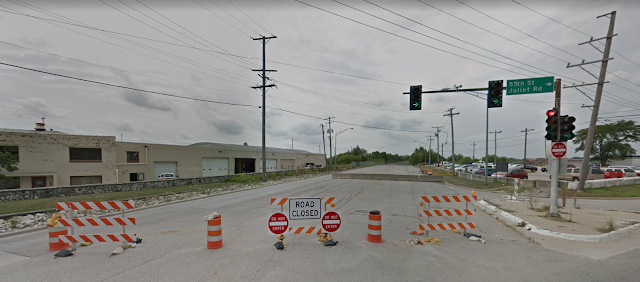The Rise and Fall of the Pacific Electric Railway: Lessons for Modern Transit
In the early 20th century, the Pacific Electric Railway was the pride of Southern California, boasting over 1,000 miles of track and connecting Los Angeles with surrounding cities. Known as the "World's Greatest Electric Railway System," the system provided a comprehensive transit network that was unmatched globally. This system, established in 1901 by Henry E. Huntington, transformed Los Angeles into a hub of connectivity and efficiency.
 |
| 1926 Map of the Pacific Electric Railway - Pacific Electric Historical Society |
Today, Los Angeles' Metro system is a shall of the PE's peak nearly 100 years ago, where one could reach nearly anywhere in LA and many places in the Inland Empire. The system was incredibly intricate, having both dedicated electric right of way but also using trackage of its owner, the Southern Pacific Railway. This complexity means that even today, we do not have a full picture of the extent of the Pacific Electric on our Abandoned Railroad Map.
At its peak, PE's interurban and streetcar lines facilitated seamless travel between urban and rural areas. The network spanned from the heart of Los Angeles to as far east as Redlands and Riverside, and south to Newport Beach and Santa Ana.
 |
Pacific Electric Railway Co., Los Angeles. Digital ID: (digital file from b&w film copy neg.) cph 3a18635. http://hdl.loc.gov/loc.pnp/cph.3a18635. Reproduction Number: LC-USZ62-16415 (b&w film copy neg.). Repository: Library of Congress Prints and Photographs Division |
PE was not just a mode of transportation; it was the lifeblood of Southern California’s growth, enabling people to commute to work, enjoy the beaches, and access remote areas with ease.
 |
| Pacific Electric 5011 at Brand Blvd. FRRandP photo collection. |
Despite its success, PE’s prominence was short-lived. Post-World War II, the allure of the automobile and the promise of freeways captivated public and political imagination. The 1950s marked a pivotal shift as Los Angeles embraced car culture, spurred by federal and state policies favoring highway construction over public transit.
 |
| Pacific Electric 5028. Donald Duke photo via Pacific Electric Historical Society. |
Automaker interests played a significant role in this transition. Companies like General Motors, Firestone Tire, and Standard Oil were part of a consortium that aggressively promoted automobiles and lobbied for highway expansion, often at the expense of existing rail systems, and the Pacific Electric's demise was the poster child of this aggressive transition from streetcars to buses at best, and streetcars to nothing at worst. This led to the systematic dismantling of PE lines, with last interurban line closing in 1961, marking the end of an era for Los Angeles' once-thriving electric railway system.
 |
Abandoned Pacific Electric Cars at Terminal Island, Los Angeles, 1956. LA Times Photo Collection |
The decision to prioritize highways over public transit had far-reaching implications. Los Angeles grew rapidly, but so did its traffic congestion and pollution. The sprawling urban landscape designed for cars exacerbated these issues, and the once-admired public transit infrastructure became a relic of the past. The ease and efficiency of PE were replaced by the frustrations of gridlock and environmental degradation.
 |
| Image from The Eternal Chaos of Los Angeles' Traffic |
Sharon Musa of The Wilderness Society notes that "with rare exceptions, the overall trend for transit providers in the U.S. has been to continually cut basic local service in a vain effort to improve finance, with public transportation often sidelined as an expendable subsidy to low-income communities, rather than a vital part of healthy public life." This has led to urban sprawl, and ironically made North American suburbs much poorer over time, as road and highway infrastructure, in addition to the basic services required to sustain a population, is much more expensive over time than investment in transit would have been.
 |
| From our blog on Railroad Scarchitecture - "The aptly named Electric Ave is one such example, as it, along with Irving Tabor Ct, create a wye where another Pacific Electric Branch to Santa Monica diverged from Venice Blvd en route to Venice Beach." (Location) |
Today, Los Angeles faces the daunting task of rebuilding its transit infrastructure. The Metropolitan Transportation Authority (Metro) is investing billions into developing a modern rail and bus network to address the city's transit needs. Projects like the Metro E Line, the D Line extension, and the Regional Connector are attempts to reestablish the connectivity once provided by PE. However, these efforts come at a much higher cost and complexity compared to maintaining and modernizing the existing PE system, especially since one of the most expensive parts of urban transit is the real estate acquisition for the right of way.
While we cannot go back to the past and entirely fix the mistakes of long term planning during the mid-20th century, we can learn from them, and understand the long-term consequences of urban planning decisions. Ensuring accessible, affordable, and efficient public transportation is crucial for sustainable urban development and reducing socioeconomic disparities. As Los Angeles strives to rectify past mistakes, other cities can learn from its history to create resilient and efficient transit systems that meet future demands. Public transit is about the most valuable product a city can have, and every city in North America should consider the costs of prioritizing short-term gains over long-term sustainability. Main Street is not Wall Street!
Thanks as always for reading!



Comments
Post a Comment